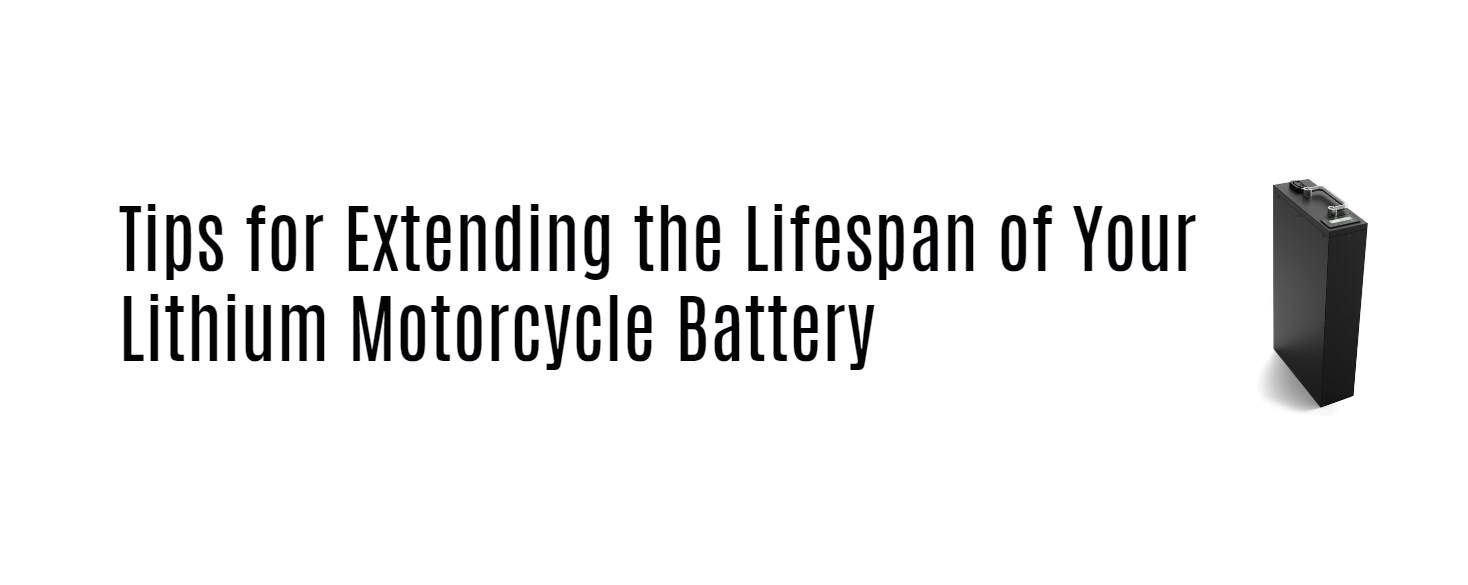The minimum expected lifespan from most manufacturers is around 5 years or at least 2,000 charging cycles. However, with proper care and usage in optimal conditions, lithium-ion batteries can last as long as 3,000 cycles. Factors such as temperature, charging habits, and maintenance practices can impact the battery’s longevity. Proper care and periodic maintenance can help maximize the lifespan of your lithium motorcycle battery. Let’s dive in and uncover all you need to know about lithium motorcycle batteries!
Lifespan of a Lithium Motorcycle Battery
Understanding the lifespan of a lithium motorcycle battery is crucial for maintaining its performance over time. Here’s a breakdown of key points:
- Average Lifespan: Lithium motorcycle batteries typically last between 3 to 5 years, depending on usage, maintenance, and environmental factors. Compared to lead-acid batteries, they offer improved durability and capacity retention.
- Maintenance: Regularly checking the battery’s charge level and voltage, along with proper storage in cool, dry conditions, can help prolong its lifespan. Avoiding deep discharge and overcharging is also essential to prevent unnecessary wear and tear.
- Factors Affecting Lifespan: Extreme temperatures, both hot and cold, can accelerate battery degradation, while improper charging practices can also shorten lifespan. By following maintenance guidelines and monitoring for signs of deterioration, you can optimize the longevity of your lithium motorcycle battery.
Factors that Affect the Lifespan of a Lithium Motorcycle Battery
Understanding the factors that affect the lifespan of a lithium motorcycle battery is crucial for ensuring its longevity. Here are the key points to consider:
- Temperature: Extreme heat or cold can significantly impact the battery’s lifespan, accelerating degradation or reducing efficiency. Maintaining optimal temperature conditions during storage and usage is essential.
- Charging Habits: Proper charging practices, following manufacturer guidelines, and avoiding overcharging or undercharging are vital to preserve the battery’s health and extend its lifespan.
- Physical Stress and Usage Patterns: Excessive vibration, rough roads, and frequent short rides without full charge can contribute to internal damage and sulfation, reducing the battery’s longevity.
- Storage Conditions: Storing the battery between 40-80% capacity in a cool, dry location when not in use can prevent degradation and prolong its lifespan.
By being mindful of these factors and adopting appropriate maintenance practices, you can maximize the lifespan of your lithium motorcycle battery.
Tips for Extending the Lifespan of Your Lithium Motorcycle Battery
To ensure your lithium motorcycle battery lasts as long as possible, it’s essential to maintain it properly. Here are some straightforward tips to help extend its lifespan:
- Keep it charged: Regularly charge your battery, especially during periods of inactivity, to prevent deep discharge and maintain optimal performance.
- Avoid extreme temperatures: Store your battery in a cool, dry place away from direct sunlight and freezing temperatures to prevent damage.
- Use the right charger: Always use a charger designed for lithium batteries to avoid overcharging and ensure proper care.
- Optimize charging cycles: Aim for full charge cycles whenever possible to maintain overall capacity and avoid frequent partial charges.
- Check connections: Keep terminals clean and securely connected to ensure efficient power transfer and prevent voltage drops.
- Minimize drain: Disconnect any accessories when not in use to prevent unnecessary power loss and extend battery life.
Following these tips will help you get the most out of your lithium motorcycle battery and enjoy reliable performance for years to come.
Comparing Lithium Batteries to Traditional Lead-Acid Batteries
When selecting a motorcycle battery, riders often choose between lithium and traditional lead-acid options. Let’s compare the two:
- Weight: Lithium batteries are much lighter than lead-acid batteries, which can enhance bike performance by improving acceleration and handling due to reduced weight.
- Lifespan: Lithium batteries generally last longer than lead-acid ones, with lifespans of up to 10 years or more with proper maintenance, potentially saving money in the long term by reducing the need for frequent replacements.
- Performance: Lithium batteries offer higher cranking power, providing a stronger initial burst of energy when starting the motorcycle and handling high-demand electrical accessories more effectively.
- Cost: While lithium batteries have a higher upfront cost compared to lead-acid ones, riders need to consider their priorities – whether it’s weight reduction, longevity, or budget-friendliness – before making a decision.
Cost Analysis: Is a Lithium Motorcycle Battery Worth it?
Let’s analyze whether investing in a lithium motorcycle battery is worth it:
- Cost Comparison: While lithium batteries have a higher initial cost, they offer longer lifespans and require less maintenance compared to lead-acid batteries, potentially saving money in the long run.
- Performance: Lithium batteries provide consistent power delivery and maintain higher voltage levels, resulting in quicker starts and better overall performance for motorcycles.
- Weight Reduction: Lithium batteries are significantly lighter than lead-acid ones, enhancing handling and maneuverability on the road.
- Environmental Impact: Lithium batteries are considered more environmentally friendly due to their higher energy density and lack of harmful substances, contributing to greener practices in the long term.
Considering these factors, investing in a quality lithium motorcycle battery seems advantageous despite the higher initial cost, offering benefits in terms of longevity, performance, handling, and environmental friendliness.


